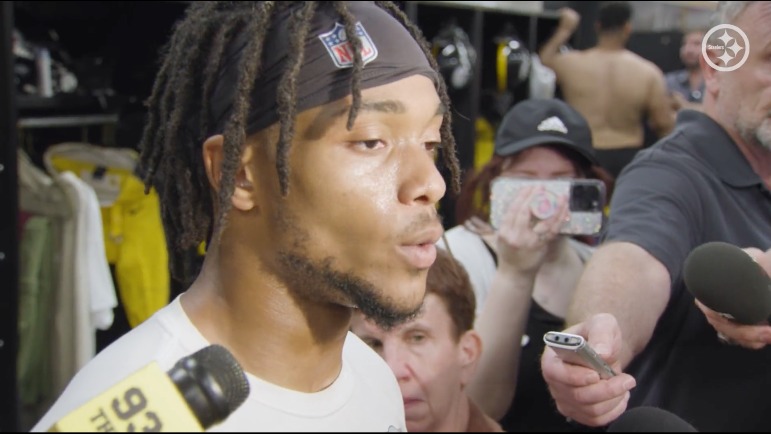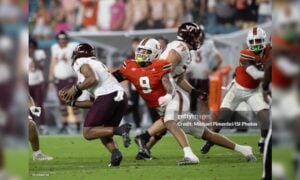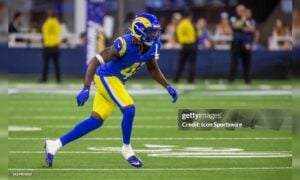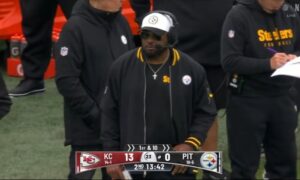The Pittsburgh Steelers’ roster on their website lists second-year wide receiver Calvin Austin III at 5’9”, 162 pounds. While I don’t suspect he’s grown any, he did tell Brian Batko earlier this offseason that he’s put on muscle, which, as the reporter writes, “he didn’t think was possible”, lowering his body fat to under five percent.
He is reportedly up to 170 pounds, which, for the record, would still tie rookie college free agent wide receiver and return specialist Jordan Byrd as the lightest listed weight on the roster. The receiver also told Batko he expects he’ll probably sweat a lot of that weight off during camp.
But what does that mean in terms of his game? A player his size is obviously not going to build his repertoire around strength, but even for those who rely on speed, it’s still important to have the ability to sometimes break through first contact. That’s where guys like Dri Archer and Chris Rainey struggled.
I hesitate to invoke those names, of course, because they were very different players. Both were essentially college running backs first. Austin is a bona fide wide receiver in every sense of the word; there’s no projection with him. He has a route tree. He has good hands. He understands the nuances of the position. Relying upon body type as means of comparison is shortsighted and unfair to Austin.
Nevertheless, anything that he can do to strengthen his base will be an asset for him if it means he can shake off an extra tackler or two rather than consistently going down on first contact. Not that that was an evident pattern in his college tape, but the reality is we’ve never seen him play against an NFL defense yet, so we don’t know what his play strength looks like.
More importantly, his rookie season sitting out the year through injury proved to be a teaching tool for him, one that he believes has him better prepared moving forward. One can only hope that’s the case, with foot injuries raising heightened concerns for players like him.
“I’ve learned a lot about taking care of my body”, he told Batko. “Right now it’s more about conditioning — getting my hamstrings, my ankles, my calves used to the power and the cuts and long [route] running. It’s just a continuous process of learning me and my body. I’ve just learned a lot from my rookie season”.
Whether it’s from talking with older players or the coaches or the training staff, he’s gotten quite an education about how to take care of yourself in the NFL, even without having gone through the full brunt of the physical toll that comes with an NFL offseason.
Will that slightly more muscular physique help him not just on the field, but to stay on the field?








